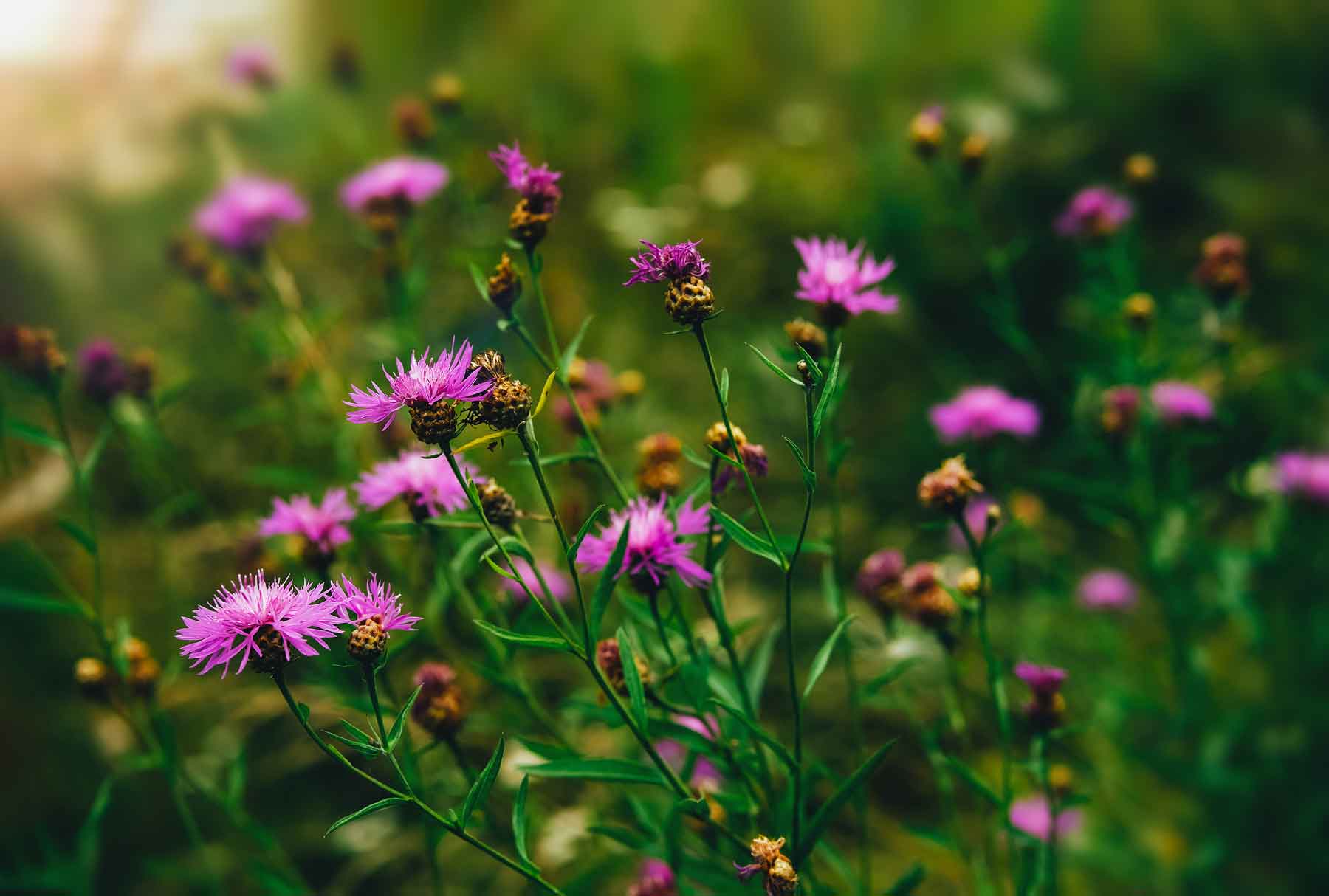Spotted knapweed is an aggressive, introduced weed species from Europe and Asia that rapidly invades disturbed areas and rangeland. It can cause serious decline in forage for wildlife. Spotted knapweed has few natural enemies and is not preferred by wildlife or livestock as forage. The sap of spotted knapweed can cause skin irritation in some people.
Spotted knapweed generally is a short-lived perennial, reproducing solely by seeds. It is a prolific seed producer with 1,000 or more seeds per plant. Seed remains viable in the soil five years or more, so infestations may occur a number of years after vegetative plants have been eliminated. The seeds can germinate from spring through early fall. Seedlings emerging in the fall often overwinter as a rosette of leaves, resuming growth again in the spring. Rosette leaves are deeply lobed. The plant grows 2 to 4 feet tall and can have one or more stems with pale green leaves which are 1 to 3 inches long. The surfaces of the upper leaves and stems are rough. Flower heads are solitary and produced from early July through August. Flowers are pink to light purple (rarely cream colored) and the petals are surrounded by stiff, black-tipped bracts, giving the flower head a spotted appearance. The black tipped bracts found below the flower petals are the key feature to distinguish spotted knapweed from other knapweed species.
Spotted knapweed infestations in the Wood River Valley are found roads, trails, the sheep driveway and other areas where disturbance to native vegetation has left bare soil where knapweed can outcompete the native vegetation. Knapweed often spreads to a new site by seed in hay, on vehicles, on animals, or in contaminated seed.
Control of knapweed infestations can be conducted with herbicide or hand removal for small areas of infestation. Biological control has been used as well. The best knapweed control is prevention, and to keep an infestation from becoming established you must correctly identify the plant. Small and young infestations of knapweed are generally easy to control with herbicides. However, an area must be monitored for several years and retreated as necessary for seedling control.
